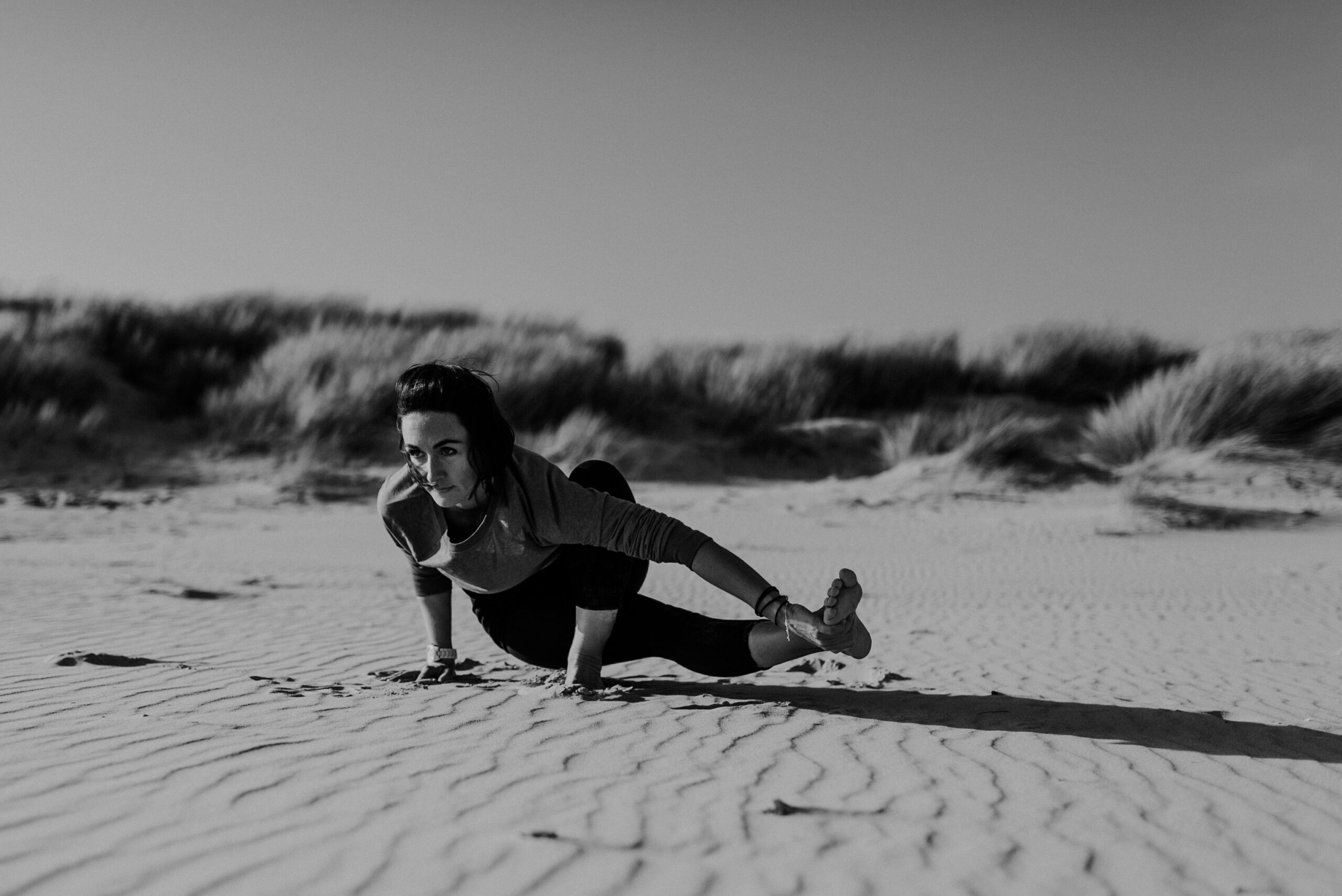
What’s the Best Way to Cue Movement in Yoga?
A Blog for Yoga Teachers
As yoga teachers, guiding students through their practice involves a delicate balance of verbal cues, demonstrations, and adjustments. In this blog post, we’ll delve into the significance of internal and external cues in teaching yoga, backed by research, to help both teachers and practitioners enhance their yoga experience.
On the one hand, teaching movement seems simple: just tell people to arrange their bodies in a particular way (i.e. a yoga pose), and that’s it.
This can certainly be true to an extent, but on the other hand, if we take a closer look at how we tell people to arrange their bodies in space, we realise there are actually a number of choices we can make about the specific movement instructions, or cues, that we give.
It turns out that different ways of phrasing movement cues can have different effects on how our yoga students hear, interpret, and carry out these directions. In fact, the options to consider with regard to cueing are quite broad, making this subject a much more rich and nuanced one than we often realise (or are typically taught about in our yoga teacher trainings).
There are several angles we can analyse movement cueing from. Today we’ll take a look at one specific aspect of cueing – and one that tends to be a hot topic in the yoga, movement, and fitness worlds these days: internal and external cueing.
TWO CUEING STYLES
Let’s start by defining the concepts of internal and external cueing.
An internal cue is one that places the focus of attention on an individual’s body, body part, or muscle as they move. For example, if we’d like our yoga students to transition from chair pose (utkatasana) to standing (tadasana), an internal cue might be “straighten your legs.”
Internal cues focus on sensations, breath, and mindfulness within the body. When instructors encourage students to “listen to their breath” or “tune into sensations,” they’re directing attention inward.
Research suggests that internal cues during yoga practice can enhance body awareness and proprioception, the perception of one’s body in space. A study published in the International Journal of Yoga Therapy found that participants who received internal cueing during yoga reported greater mindfulness and body awareness compared to those who didn’t receive such cues.
Internal cues also foster a deeper connection between the mind and body, facilitating the integration of yoga as a mind-body practice. For instance, directing attention to the breath can promote relaxation and reduce stress, as demonstrated in a study published in the Journal of Alternative and Complementary Medicine. By incorporating internal cues such as “breathe into the stretch” or “notice the sensations in your body,” instructors can help students cultivate a more profound sense of presence and self-awareness during their practice.
By contrast, an external cue is one that directs attention to what’s happening outside the body. External cues ask us to focus on the effect our movement has. They generally involve an external object or surface.
External cues involve visual or auditory guidance. These cues often focus on alignment, posture, and movement. Research suggests that external cues can improve movement efficiency and performance by providing clear instructions and feedback. A study published in the Journal of Strength and Conditioning Research found that external focus cues (e.g., “push the floor away with your feet”) led to better balance and stability in yoga poses compared to internal focus cues (e.g., “engage your leg muscles”).
Instructors use external cues to guide students into proper alignment and prevent injury. By offering visual demonstrations and verbal cues such as “align your hips with your knees” or “push your heel to the wall behind,” instructors help students understand the correct execution of poses.
WHY DOES THE INTERNAL VS. EXTERNAL DISTINCTION MATTER?
Although these subtle differences in focus might seem relatively inconsequential on the surface, sport science research has revealed that these two types of cueing actually have significantly different effects on athletic performance. Granted, yoga is not an athletic pursuit. But we can still glean some pertinent insights for yoga teaching from what sport science research reveals about why these different effects exist between internal and external cueing.
Internal cues help improve what’s called the “mind-muscle connection,” which increases neural drive to muscles. In a physique training context, this may translate into enhancements in muscle growth. The muscle growth seems to be related to our ability to activate more muscle fibres of the target muscle. When more muscle fibres within a muscle are active, those additional portions of the muscle can be stimulated to grow. Therefore, when muscle growth is a goal, internal cues may be especially helpful.
However, internal cues may also create less efficient movement. The idea is that when we hear an internal cue, our attentional focus is guided to our body, and this makes us more directly conscious of the movement in question. If our conscious mind is paying more attention to the movement, this can actually interfere with the automatic coordination our nervous system would otherwise carry out reflexively. This can result in movement that is clunkier and less efficient.
While internal cueing does support muscle growth goals, there are other athletic performance measures that research has shown to be negatively impacted by internal cues and the less efficient movement they create. These include strength, speed, jump distance, jump height, and accuracy (such as shooting a basketball through a basketball hoop). Research has actually revealed that external cues are superior to internal cues for enhancing all of these aforementioned athletic goals.
This is probably because external cues guide the focus of attention away from the body and the movement taking place. When our focus is placed on the effect of our movement rather than on the movement itself, we can “get out of our nervous system’s way,” so to speak. This allows our nervous system to do its automatic, reflexive job of coordinating our movement on its own, without our conscious interference. This results in more efficient movement.
EXTERNAL CUEING IS EFFECTIVE, BUT IS IT ALL WE NEED?
Many sports coaches and athletic trainers champion external cues while discouraging the use of internal cues. In my experience, this tendency has spilled over into the yoga world as well.
A more accurate approach to cueing is to understand that both types of cues have their unique benefits. We can choose which style to use based on the context of the specific movement, the specific individual, and their specific goals. Internal cues are not inherently less worthy because they create less efficient movement.
However, this is a yoga article on a yoga blog intended for yoga teachers and practitioners. And in that sense, the following question naturally arises: how often do we find these athletic goals that sport science focuses on in yoga?
Never… Therefore cueing specifically for athletic performance goals is probably not a relevant practice for yoga teachers. That said, we can still use what sports science research has revealed about internal and external cueing to inform our own yoga-based perspective on this issue.
In a yoga practice, internal cues are helpful because they encourage conscious awareness of our movements. When we consciously pay attention to our movements, we may learn more about our body, increase our awareness of our movement habits, and improve our proprioception. Internal cues might be especially well-placed during opening warm-up sequences if we’re interested in creating some initial awareness about something specific in our body, as well as throughout a class whenever the goal is to specifically cultivate more of a mindful presence to one’s body and how it’s moving.
External cues are also helpful in a yoga practice because they encourage movement efficiency and can therefore help foster more of a “flow state” on the mat. Suppose the goal in a given moment is to “tune out” and to move with our breath and the pace of the class in more of an automatic, reflexive way. Then external cues might help better facilitate this experience. Examples of contexts in yoga in which a flow state might be desirable are sun salutations and vinyasa flows, where we’re continually moving from one pose to the next.
SO WHAT’S THE BEST WAY TO CUE MOVEMENT IN YOGA?
Integration of Internal and External Cues
The most effective yoga instruction often involves a combination of internal and external cues. By integrating both types of cues, instructors can offer comprehensive guidance that addresses the physical, mental, and emotional aspects of the practice. For example, a teacher might cue students to “root down to the Earth” (external cue) while breathing deeply into the pose (internal cue).”
Combining internal and external cues can enhance motor learning and skill acquisition. A study published in the Journal of Sports Sciences found that participants who received concurrent internal and external cues showed greater improvements in movement performance compared to those who received only internal or external cues.
Incorporating internal and external cues into yoga instruction is essential for facilitating a holistic and enriching practice. Internal cues cultivate mindfulness, body awareness, and emotional regulation, while external cues provide guidance on alignment, posture, and movement mechanics. By understanding the significance of both types of cues and leveraging research-backed strategies, we can empower our students to deepen their practice and experience its full benefits. Whether you’re a teacher or practitioner, paying attention to these cues can transform your yoga journey into a more mindful, balanced, and fulfilling experience.
REFERENCES
Schoenfeld, Brad J., et al. “Differential effects of attentional focus strategies during long-term resistance training.” European journal of sport science 18.5 (2018): 705-712.
Winkelman, Nicklaas C. The Language of Coaching: The Art and Science of Teaching Movement. Human Kinetics Publishers, 2020.
Wulf, Gabriele. Attention and Motor Skill Learning. Human Kinetics, 2007.
Wulf, Gabriele. “Attentional focus and motor learning: a review of 15 years.” International Review of sport and Exercise Psychology 6.1 (2013): 77-104.
If you’d like more information on yoga anatomy please contact me or book here to practise with me in Marlow, Twickenham and online.
With love
Anney xx




